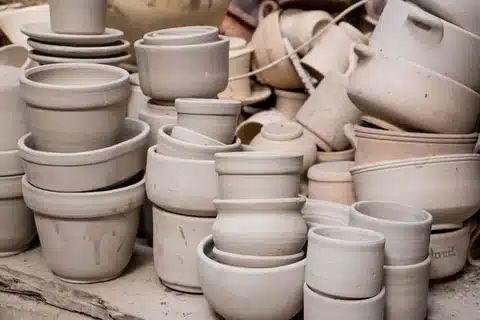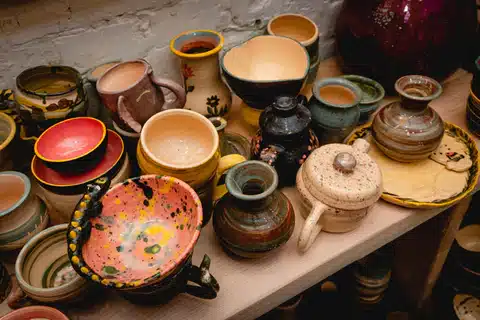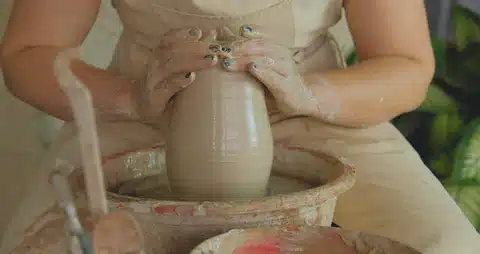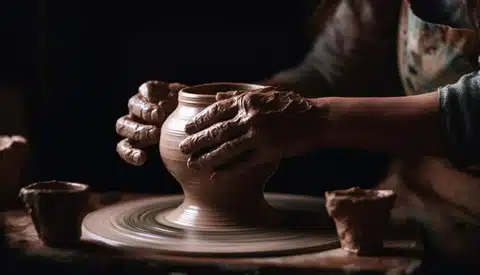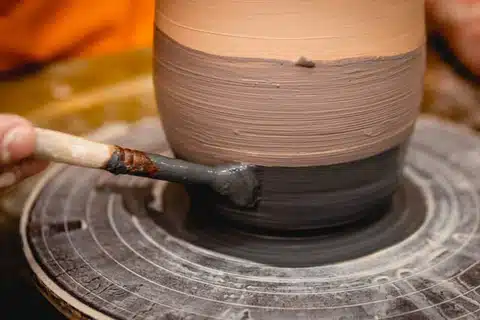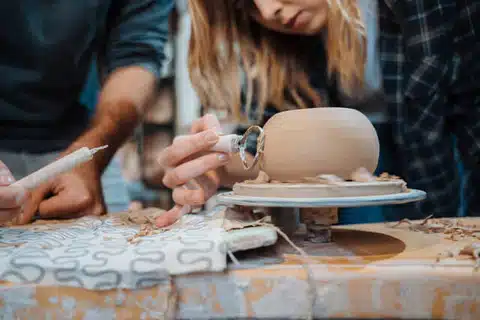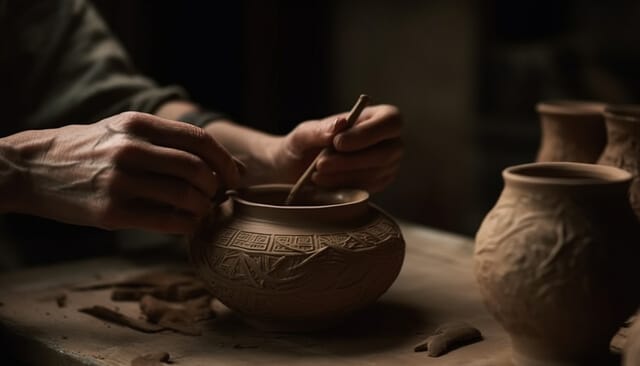7 Surefire Ways to Ensure Your Pottery Survives the Trip to the Kiln
There is no greater pain for a ceramist who painstakingly poured their heart and soul into their craft, only to have it fall apart after bisque firing. Perhaps the most ironic thing about this situation is that this initial firing is supposed to help the pottery unlock its next level of hardiness – but, alas, it does not survive.
It can appear daunting to have to thrust your hard work into this massive oven, but understand that it is absolutely necessary for your pottery to look and function better. However scary the prospect is, there are still ways to get around it – lessening your chances of opening the kiln door and seeing what resembles ancient ruins – and give you the bliss of structurally sound and resilient bisqueware. Here, we introduce seven simple ways.
Wedge Your Clay Thoroughly
Wedging or kneading your clay seems like a process so basic to pottery making that some of us may not even question it. But the science behind this constant throwing down, rolling, pushing and pulling is understatedly vital to successful ceramic creations void of unseemly bulges and cracks.
Wedge your clay to eliminate any air bubbles, especially if your clay is bagged or store-bought. By removing trapped air, you are preventing the formation of cracks that may arise during the pottery’s drying and firing process. It also helps to maintain the plasticity for better clay manipulation, allowing you to shape your work with more ease and confidence.
Avoid Having Sections That Are Too Thick
Keep the thickness of your pottery parts as uniform as possible so they can dry at a consistent rate throughout the piece. This applies for both drying and firing processes. Many ceramists have experienced cracks on the base of their pottery as the bottom is usually thicker and where most of the moisture is retained, being the least exposed to air. During firing, the difference in temperature leads to uneven drying and consequently shrinkage and stress, shifting and at worst, cracking the clay.
Ensure Structural Integrity
Artists aren’t necessarily engineers, but understanding the workings of structural integrity is still fundamental to create stable and durable pieces that are worth the time and effort. When building your pottery, consider the entire structure and whether there are any additional attachments to be affixed to the main piece. If so, make sure they are stable and are capable of withstanding gravity over time, having the ability to hold themselves up independently during firing. Large or heavy parts can be propped up during construction or drying, using objects to transfer or offset some weight as they harden and weld.
Attachments such as handles and spouts aside, assess if your pottery is well-balanced. Evaluate areas such as its centre of gravity, foundation stability and proportion, and if they are at risk of tipping or slipping. Failing to consider the weight and placement of your attachments in relation to your main piece can also be detrimental to the overall structural integrity of your pottery. As much as you wouldn’t want your handles to be too sharp and small that they break off easily, you also wouldn’t want them to be too bulky that they keel over to one side without support.
Smoothing and Blending
Scoring and applying slip is an effective way of gluing separate pottery parts together, but sometimes that may not be enough. If desired, it helps to smooth the surface of your work to bond and strengthen separate pieces, unifying them to be whole and collective. This eliminates weak points by compressing the clay, minimising inconsistencies for more resilience and less fragility.
Monitor the Drying Process
The drying process of your pottery has to be slow, steady and intentional. You can exert more control over this stage by lightly spraying the pottery with water before placing a roomy bag over it, careful not to cover it entirely for limited but adequate ventilation to take place. Based on the conditions of the studio and their preferences, some potters may opt for a damp cloth instead – seeing it as a more reliable method of locking in moisture against a quick-drying environment.
The drying of your pottery has to be monitored regularly. Keeping sufficient dampness within the bag or the rag is essential to optimal drying so that the moisture loss is controlled and matched throughout the piece. Re-moisten with a water spray if necessary. It is important not to make your pottery or its surrounding atmosphere too wet, either, as it could promote mould or mildew growth.
Proper Ventilation
Ventilation is crucial throughout the entire process of pottery production, even when in the kiln. Besides functioning kiln vents, potters can consider cracking the kiln lid slightly ajar in the early stages of firing to allow excess steam to safely escape the chamber. This prevents the cracking of ceramic wares due to thermal shock and incomplete burnout. As a rule of thumb, the kiln should always be placed in a good location with maximum airflow, for both the quality of pottery and safety of artists.
Consider Poking a Little Hole
Some ceramists would recommend making a hole in pottery before firing as a precautionary measure against an undesirable buildup of air and moisture. While not always necessary, poking a little hole provides a vent for gases to escape, especially for hollow vessels such as vases or cups. The hole also lets heat penetrate the interior of the piece more effectively, reducing the likelihood of cracks forming and in some cases, explosions. These risks are not present in small pieces or solid forms and therefore may not be required in situations with minimal or no air pockets.
Conclusion
No matter how nerve-racking the practice is, bisque firing remains an unavoidable step for strong and sturdy ceramic wares whether or not you intend to glaze your pottery. By wedging your clay with care, blending properly, keeping an eye on the drying process, poking a hole as well as ensuring even thickness, structural integrity and ventilation, you can make your bisque firing experience a less formidable one with higher chances of success and prolonged durability.
Apart from taking these preventive methods, we at Terra & Ember have the professional eye and expertise to guide you through a safe and fruitful pottery journey. Join us at one of our workshops or lessons, or simply work with us at our studio today. There’s no better place for shared insights, experience and ability for artists to learn from each other and truly grow and flourish.

